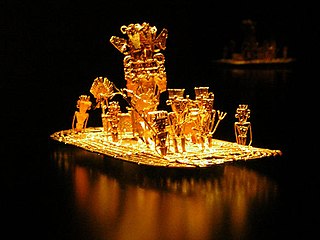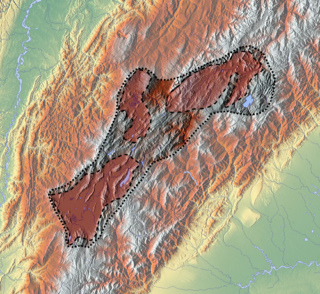 W
WThis is a list of conquistadors who were active in the conquest of terrains that presently belong to Colombia. The nationalities listed refer to the state the conquistador was born into; Granada and Castile are currently part of Spain, but were separate states at the time of birth of the early conquistadors. Important conquistadors and explorers were Alonso de Ojeda, who landed first at Colombian soil and founded the first settlement Santa Cruz, Rodrigo de Bastidas, who founded the oldest still remaining city Santa Marta, Pedro de Heredia, who founded the important city of Cartagena in 1533, Gonzalo Jiménez de Quesada, who was the leader of the first and main expedition into the Andes (1536–1538), with his brother second in command and many other conquistadors, 80% of whom who didn't survive, and Nikolaus Federmann and Sebastián de Belalcázar who entered the Colombian interior from the northwest and south respectively.
 W
WThe Muisca were a people living in the central highlands of Colombia; the Altiplano Cundiboyacense and neighbouring valleys. The variation of climates and ecozones within their territories made the Muisca excellent farmers. Over time, various species of flora and fauna have been discovered in Colombia. This list contains the living genera and species and fossils named after the Muisca, their religion or their settlements.
 W
WThis is a list of museum collections pertaining to the Muisca. Most of the Muisca artefacts are housed in the Gold Museum, Bogotá, the museum with the most golden objects in the world. Other findings are in the Archaeology Museum in Sogamoso and in the Archaeology Museum of Pasca. Few artefacts are on display outside Colombia. Most of the objects outside Colombia are tunjos; small offer pieces part of the Muisca religion.
 W
WThis is a list of institutes providing research into the Muisca. The three most important universities in Bogotá have a department of anthropology to study the indigenous cultures of Colombia. While international research compared to the Inca, Aztec and Maya is quite limited, various other universities have provided knowledge about the Muisca and their culture.
 W
WThis list contains Muisca and pre-Muisca scholars; researchers, historians, archaeologists, anthropologists and other investigators who have contributed to the current knowledge of the Muisca and their ancestors of the prehistory of the Altiplano Cundiboyacense and of the preceramic and ceramic Herrera Periods.
 W
WThis is a list of Muisca and pre-Muisca archaeological sites; sites on the Altiplano Cundiboyacense, where archaeological evidence has been discovered of the Muisca and their ancestors of the Herrera, preceramic and prehistorical periods.
 W
WThis list contains the toponyms in Muisca, the language of the Muisca who inhabited the Colombian Altiplano Cundiboyacense before the Spanish conquest of the Muisca in the 1530s. The name of the language of the Muisca is called Chibcha, Muisca or, in its own language, Muysccubun. Muisca means "man", "person" or "people".